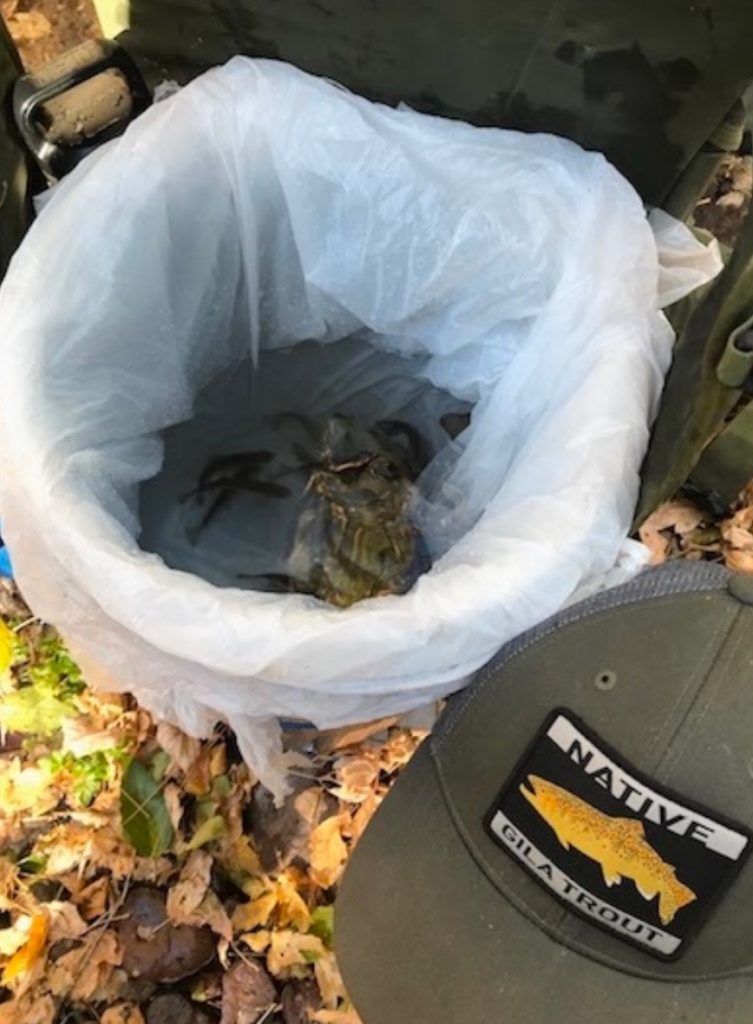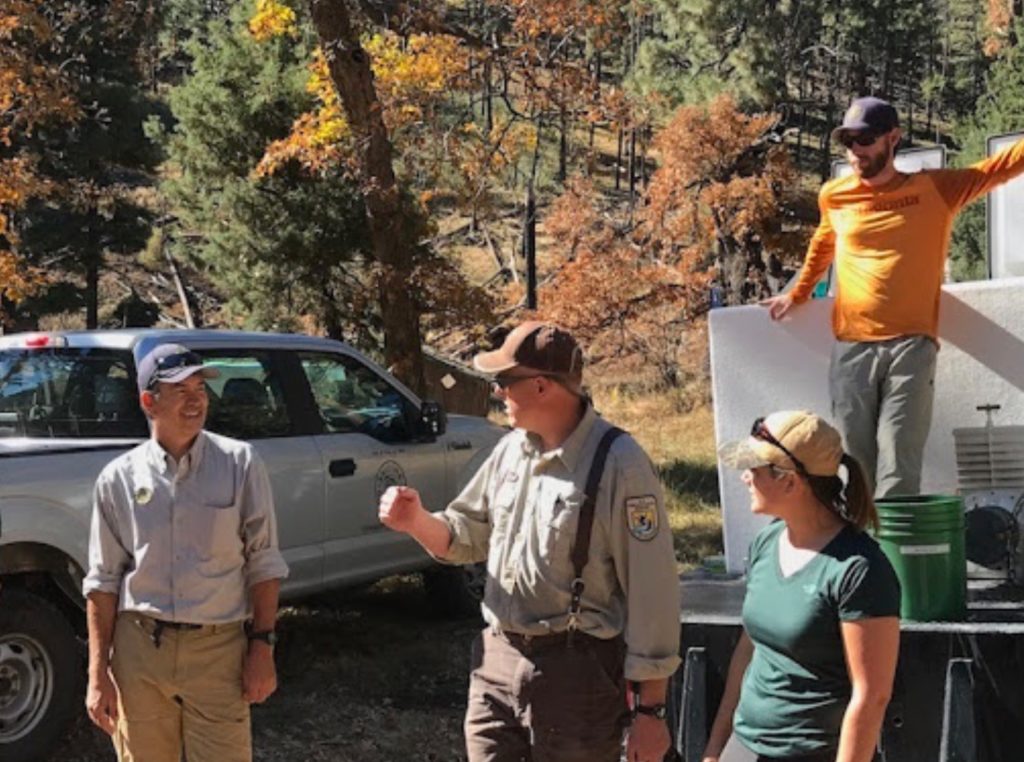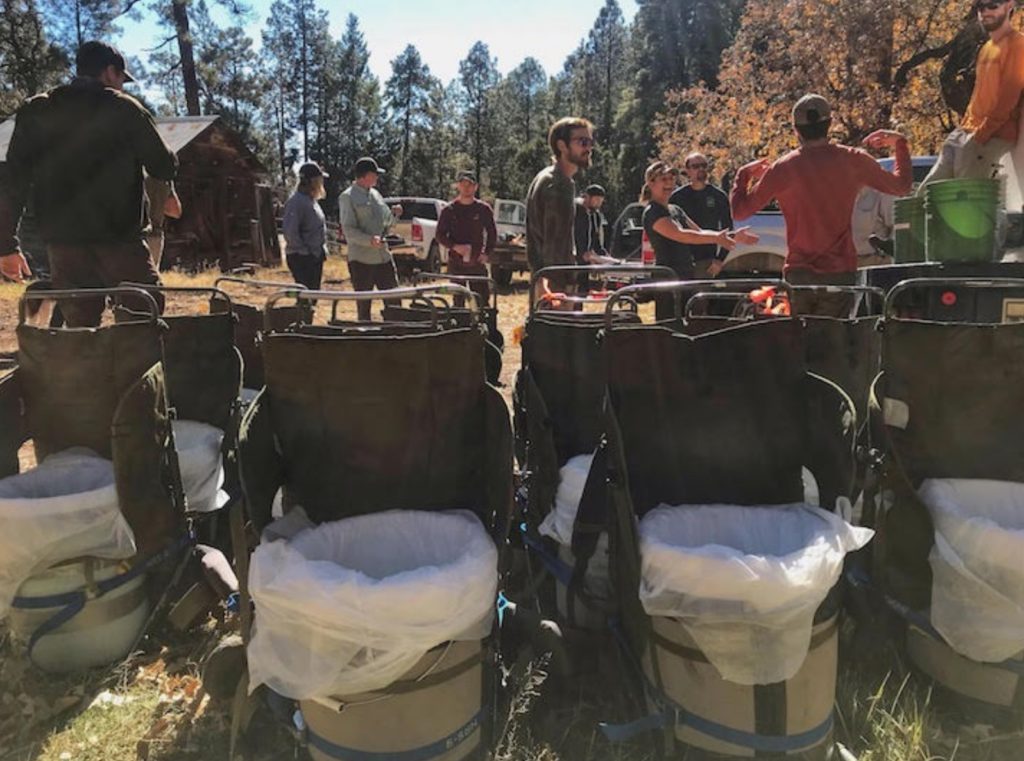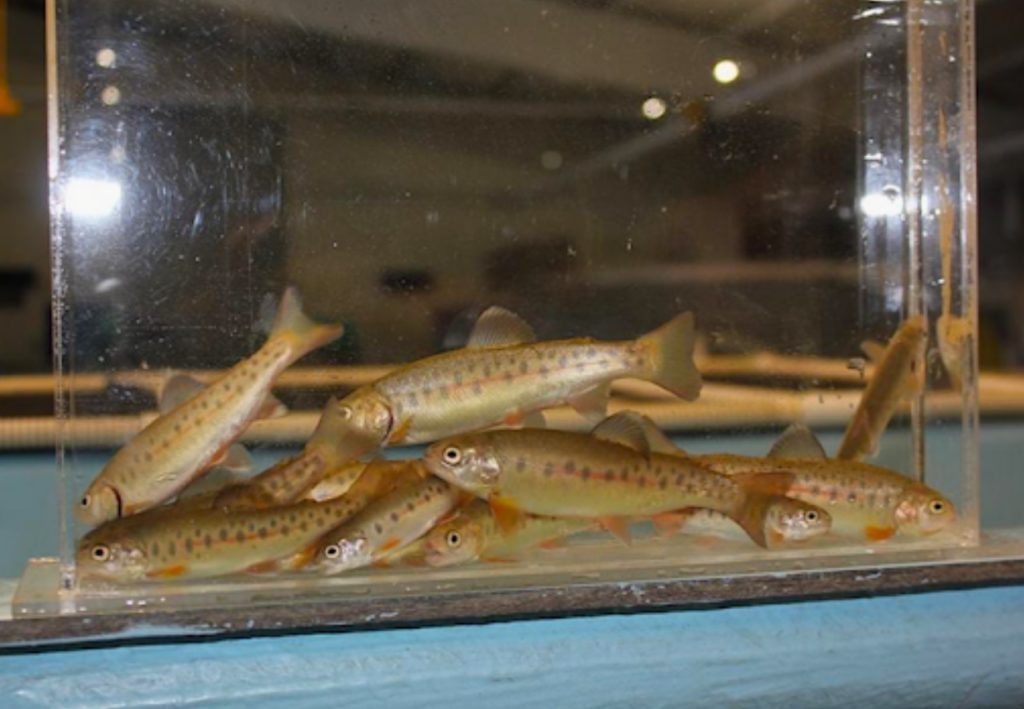
By Tyler Coleman
On November 3, 2018, a truck from Mora National Fish hatchery carrying 500 Whiskey Creek lineage of Gila Trout arrived in the Apache-Sitgreaves National Forest. These fish traveled approximately eight hours from the hatchery in New Mexico to be reintroduced to their native range. Separated into plastic bags filled with oxygen then sealed and placed into buckets on open framed backpacks this was the first time Gila Trout had been in the White Mountains since 2011. A team of biologists from Arizona Game and Fish Department with partners U.S. Fish and Wildlife Service, Mora National Fish Hatchery and volunteers from Backcountry Hunters and Anglers, Trout Unlimited and Western Native Trout Initiative strapped on the fish stocking packs and made their way down almost 3000 ft of elevation into the canyon of Raspberry Creek.

At the start, the trail in showed recent use by horseback riders, but as we made our way into the canyon the path became overgrown and the droppings along the trail turned from horse to Black Bear. Coues Deer roamed the hillsides and almost seemed confused by our presence and a nice sized buck came down further to investigate. After about 5 miles of hiking volunteers spread out along the creek looking for good pools in which to place the fish. We began exchanging water from the creek to the bucket multiple times allowing the Gila Trout to get acclimated to the water temperature reducing stress on the fish. Their long journey was finally over as volunteers independently released the fish into the chosen pools. It wasn’t long before we noticed the fish rising to eat some bugs that were hatching and for a moment it was like any other day I had spent on a creek.

As we made our way back out of the canyon, I thought about how things would go over the next few years for these fish. I wondered if one day I would be back in these mountains with the same friends, but with fly rods in hand and a backpack full of gear to say hello to the fish once again. This hike isn’t for casual anglers, due being almost 11 miles round trip, not including what you would do to fish and steep change in elevation. For me this will be a destination to remember for the future when fishing is allowed in hopes of the chance to see one of the more rare native trout species in their natural environment once again. Gila Trout were the first native trout species I have ever fished for and while that stream was devastated by wildfires, they will always have a special place in my heart.

I later asked Bryan Giordano, Streams Biologist for Arizona Game and Fish Department, what the five-year plan for Raspberry Creek would be. He said “ As long as fish are available, we will stock the next two years to supplement the population. Each spring/summer, we will complete a visual survey and hopefully document survival and recruitment. After three years of stocking, we will complete a population estimate survey.” These surveys help determine the overall health of the population if it is self-sustaining and able to support a catch and release fishery. If this project and others that are already in the works are successful it will create an opportunity for anglers to fish for these Arizona natives in streams once again.

The native trout of Arizona have had a rough history with both the Gila and Apache originally listed as endangered, but since have been downlisted due to successful culturing in captivity, greater knowledge of existing populations, and active management and conservation. Due to recent wildfires, there are currently there are no fishable stream populations of the Gila trout in Arizona. The Raspberry Creek Gila Trout were first re-introduced in 2000, surviving first drought in 2002 then the KP Fire in 2004. The population was later lost in 2011 as the Wallow Fire burned for 41 days and consumed over 538,049 acres in Arizona and New Mexico. In 2012, the Western Native Trout Initiative contributed $53,000 to a joint effort with the Arizona Game and Fish Department, U.S. Forest Service, and U.S. Fish and Wildlife Service to conduct post-Wallow Fire habitat fish abundance surveys and evaluate existing fish barriers in streams critical to future Gila trout recovery efforts in Arizona. This assessment led to projects like the Raspberry Creek reintroduction. Thank you to all of the organizations and volunteers that contribute to the restoration of our native trout species – there would not be great experiences like these without all of your hard work and a huge thank you to Therese at Western Native Trout Initiative for the opportunity.
Tyler Coleman is an undergraduate researcher at Utah State University, majoring in Fisheries and Aquatic Sciences. He is also an intern with Trout Unlimited, President of the USU Backcountry Hunters and Anglers Collegiate Chapter and works in the USU Fish Ecology Lab under Dr. Phaedra Budy. He manages the Western Native Trout Challenge program as well as public outreach for Western Native Trout Initiative and is a professional fly fishing guide.





